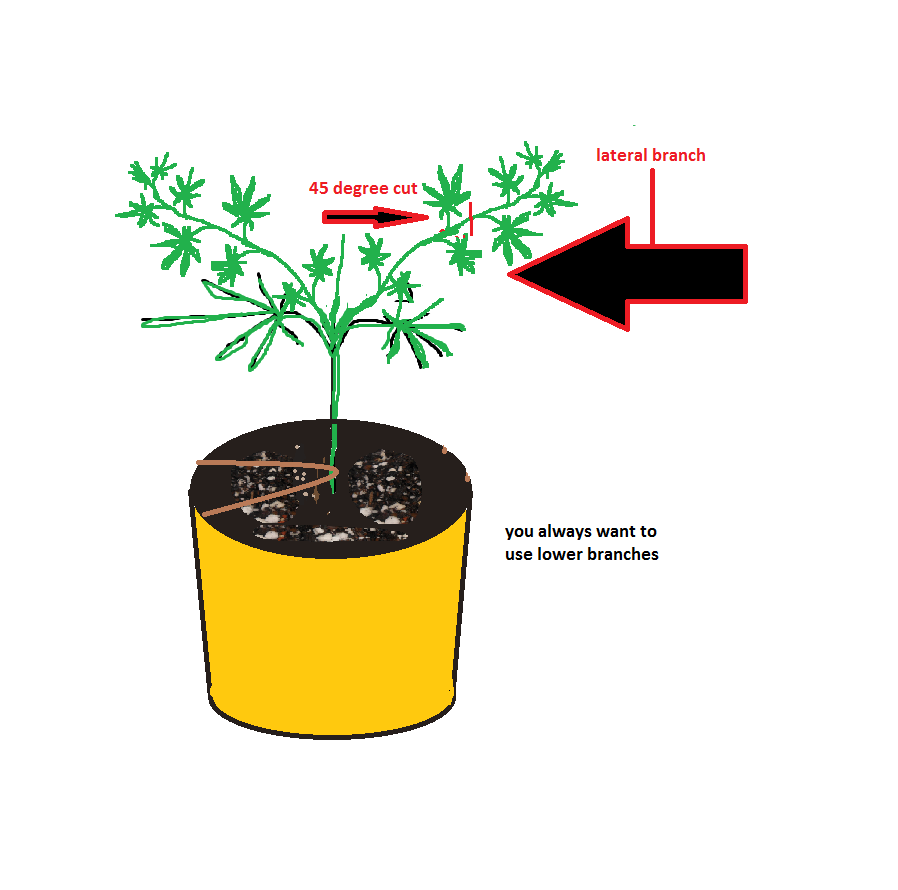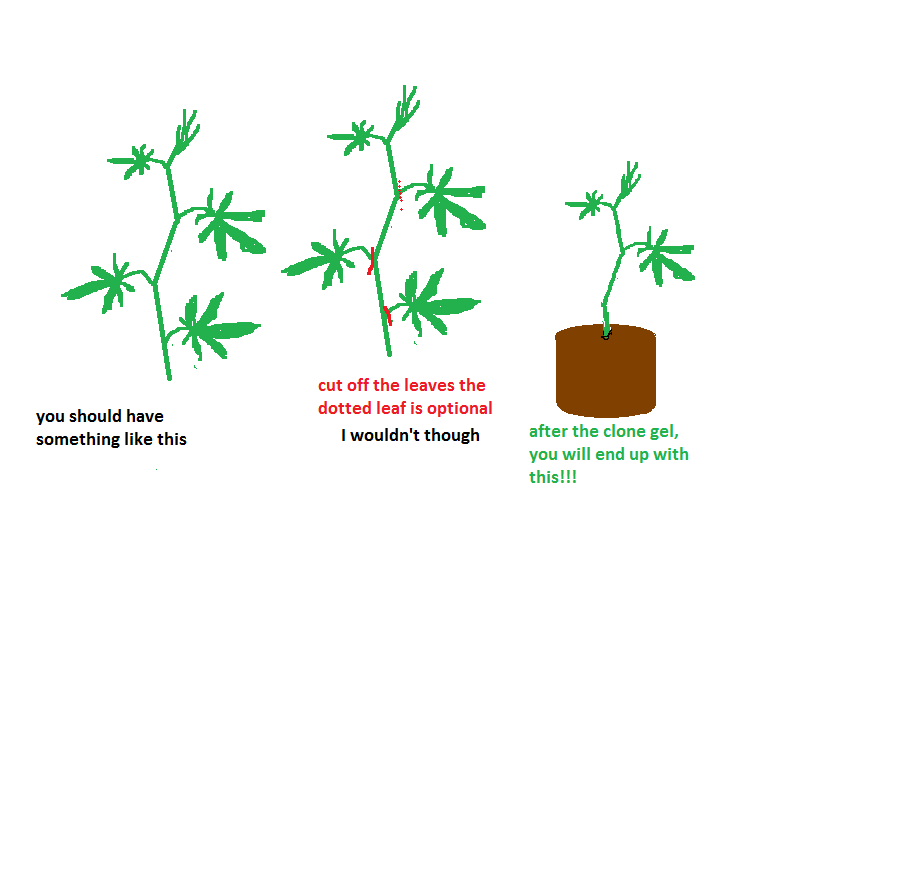re: QT's Second Grow - 1st Journal
REGENERATION
It is possible to harvest plants and then rejuvenate them vegetatively for a 2nd and even 3rd harvest.
A second harvest can be realized in as little as 6-8 weeks. Since the plant's stalk, and roots are already formed, the plant can produce a second, even third harvest of buds in a little more than half the time of the original harvest.
When harvesting, take off the top 1/3rd of the plant. Leave most healthy fan leaves in the middle of the plant, cutting buds off branches carefully.
On the lower 1/3rd of the plant, take off end flowers, but leave several small flowers on each branch.
These will be the part of the plant that is regenerated. The more buds you leave on the plant, the faster it will regenerate.
Feed the plant some Miracle Grow or any high nitrogen plant food immediately after harvest.
When you intend to regenerate a plant, make sure it never gets too starved for nitrogen as it is maturing, or all the sun leaves will fall off, and your plant will not have enough leaves to live after being harvested.
Harvested plants can come inside for rejuvenation under continuous light or are left outside in Summer to rejuvenate in the natural long days.
It will take 7-14 days to see signs of new growth when regenerating a plant. As stated before, and in contrast to normal growth patterns, lower branches will be the first to sprout new vegetative growth.
Allow the plant to grow a little vegetatively, then take outside again to reflower. Or keep inside for vegetative cuttings.
You now have two or three generations of plants growing, and will need more space outside.
But you will now be harvesting twice as often. As often as every 30 days, since you have new clones or seedlings growing, vegetative plants ready to flower, and regenerated plants flowering too.
Regenerating indoors can create problems if your plants are infected with pests.
It may be best to have a separate area indoors that will not allow your plants to infect the main indoor area.
An alternative to regenerating indoors is to regenerate outdoors in the Summer.
Just take a harvest in June, then allow the plant to regenerate by leaving some lower buds on the plant, and leaving the middle 1/3rd of the plant's leaves at harvest.
Feed it nitrogen, and make sure it gets lots of sun. It will regenerate all Summer and be quite large by Fall, when it will start to flower again naturally.
PRUNING
Plants that are regenerated, cloned and even grown from seed will need to be pruned at some point to encourage the plant to produce as much as possible and remain healthy.
Pruning the lower limbs creates more air-flow under the plants in an indoor situation and creates cuttings for cloning.
It also forces the plant's effort to the top limbs that get the most light, maximizing yields.
Plants that are regenerated need to have minor growth clipped so that the main regenerated growth will get all the plant's energy.
This means that once the plant has started to regenerate lots of growth, the lower limbs that will be shaded or are not robust should go.
The growth must be thinned on top branches such that only the most robust growth is allowed to remain.
Once nice aspect of regenerating plants is that some small buds left on the plant in anticipation of regeneration will not sprout new growth and may be collected for smoke.
The plant may provide much smokable material if it is caught before all the old flowers dry up and die with the new vegatative growth occuring.
Try to trim a regenerated plant twice. Once as it is starting to regenerate, collect any bud that is not sprouting with new growth and smoke it.
Then later, prune again to take lower clippings to clone and thin the upper growth so that larger buds will be produced.
If a regenerated plant is not pruned at all, the resulting plant is very stemmy, does not create large buds and the total yield will be significantly reduced.
Good read--->joys-growing-great-guide
 and never give up!!!
and never give up!!! and never give up!!!
and never give up!!!




 i dont like to kill things , bonsais never need to be choped down , and when properly cared never die !
i dont like to kill things , bonsais never need to be choped down , and when properly cared never die ! 






